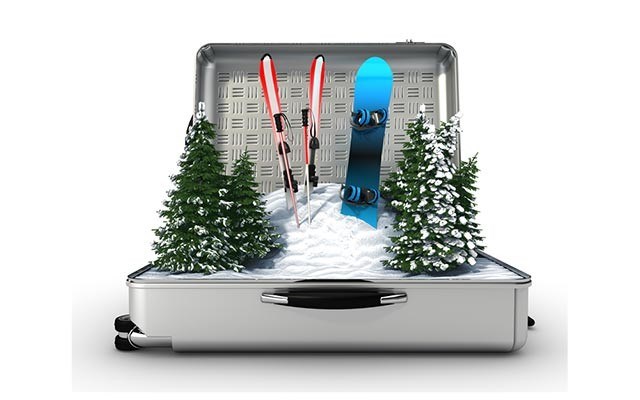There is no denying that a certain sense of relief is infiltrating the community as snow settles, and stays, on the mountains and valleys we play on.
We all love Whistler when she wears white.
As dry cold weather continued through the end of last year nerves were getting frayed, and when the rain came, well, many businesses began to head into survival mode.
But as we read in last week's Pique the strategies and plans put in place over the last several years really helped offset a significantly lower than usual snow fall.
The outdoor ice-rink — dressed up in white thanks to a snow gun — hosted more people than in 2012, New Year's Eve celebrations saw thousands more enjoy the resort, The Holiday Experience was more popular than ever, the tube park on Whistler was open, indoor recreation at places such as Meadow Park and Bounce trampoline centre were packed with happy users.
And then there are the greater number of artistic offerings as well, including the Squamish Lil'wat Cultural Centre.
And let's not forget the snowmaking that is now possible on both Whistler and Blackcomb. In days gone by when we have had poor snowfall there were no guns to soften the fickle personality of Mother Nature.
These changes to offerings in the resort have, of course, been examined, criticized, lauded and gossiped about in the community.
But there can be no denying that they make a difference when the going gets tough.
So do we need more to tackle the issue of how to keep guests happy when the weather is not cooperating with Whistler's plan to be nature's outdoor playground?
The answer must be yes.
Ski resorts across North America are looking at diversification in offerings, not just to deal with inclement weather (climate change impacts long term perhaps?), but also because travellers are demanding more — usually a third of the people who come to ski/snowboard at resorts don't head up the mountains on any given day.
This understanding has spurred on the growth of activities such as snowmobiling, dog sledding, spa offerings and so on.
But small businesses are still vulnerable. Whistler Blackcomb, on the other hand, is financially structured to weather a few storms. Though I'm sure WB's officials would agree that its success is closely linked to the success of the resort as a whole.
But we are not just in the ski business anymore — we are in the mountain vacation business.
The recognition of this fact is rejected in the Economic Partnership Initiative report released last year, which includes a strategy around "weather-independent" attractions.
Part of that is to, "Review and consider opportunities for expanded weather independent attractions in Whistler."
The EPI committee won't be meeting again until next month, but given the weather patterns to date here it's hard to imagine that this strategy discussion won't be front and centre.
According to a joint report released in December 2012 by the U.S. based Natural Resources Defense Council and a nonprofit advocacy group called Protect Our Winters, the U.S.'s $12.2 billion winter sports industry is already suffering from climate change. The report estimates that U.S. ski resorts lost a combined $1 billion and shed up to 27,000 jobs between 1999 and 2010 due to reduced snowfall and a shift in outdoor habits by Americans.
Last year, American ski resorts suffered one of the warmest winters since the 19th century. According to the NRDC report, half of the nation's resorts opened late and 48 per cent closed early. Whistler, of course, had an amazing year — but we know we are at the mercy of the weather gods.
Some are diversifying, as Whistler has, to become a strong all-season resort.
The Vail Resorts and Powdr Corp recently opened Woodward Tahoe in California, a world-class action sports training center and youth camp. The 33,000-square foot indoor facility at the base of Boreal Mountain Resort on Donner Summit, offers multi-level Olympic trampolines, a Super Tramp, a concrete skate park for skateboarding and BMX biking, a pump track and skatelite ramps to foam pits for aerial ski, snowboard, BMX and skateboard training.
According to the website its "goal was to create the most fun place on the planet to hang with your friends..."
And what about the amazing Pump House indoor waterpark at Jay Peak ski resort? What could something like that mean to Whistler and the Sea to Sky?
We do have to stay true to our brand — authentic, nature-based activities. But we also have to be sustainable for the long term.
A fond farewell: Last week was Andrew Mitchell's last in the offices of the Pique, which has been home to The Question since before Christmas. After more than 14 years at the paper he has changed career paths and we wish him well. I worked with Andrew as a colleague when I was a reporter, and when I became editor — more than 12 years in all — and rarely have I come across a more loyal and dedicated journalist. We will miss him and we thank him for all he did.




